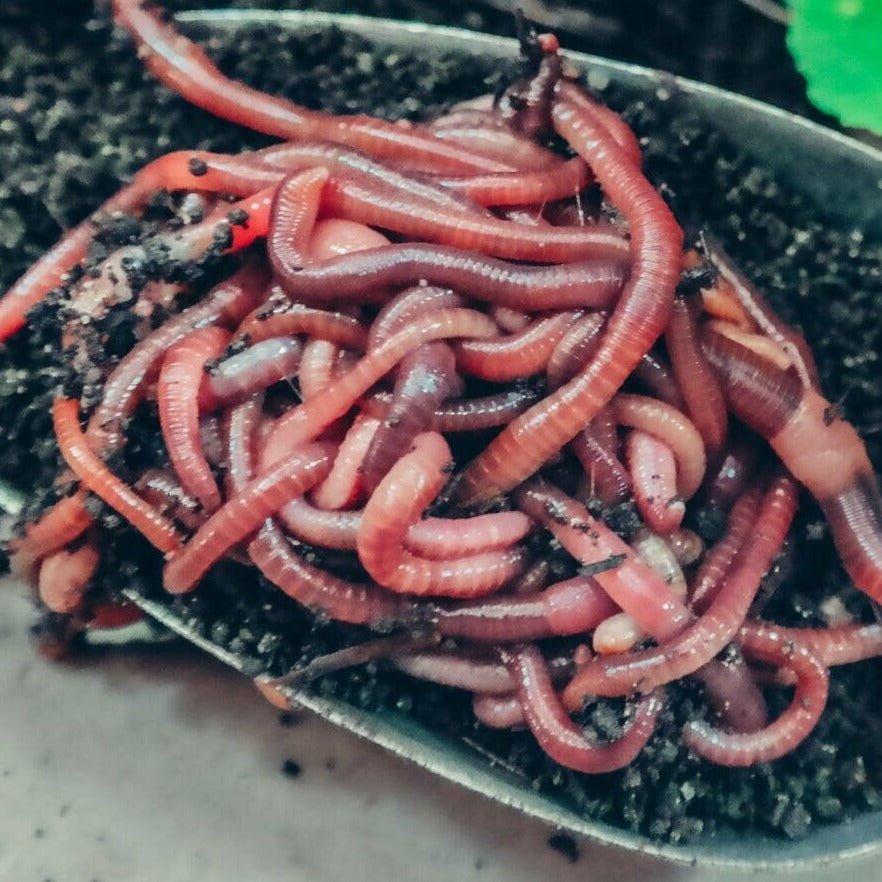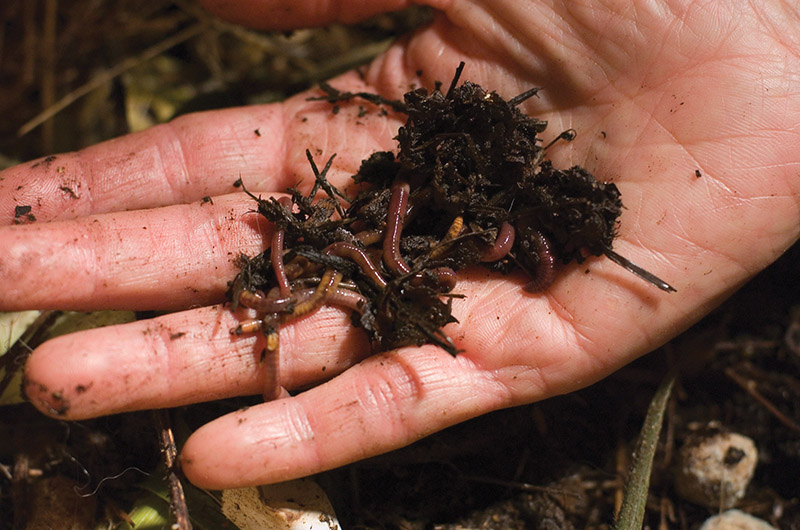Get Red Wiggler Worms Online - Convenient and Rapid Shipping
Get Red Wiggler Worms Online - Convenient and Rapid Shipping
Blog Article
Making The Most Of the Benefits of Red Wiggler Worms: A Comprehensive Handbook for Home Gardeners and Urban Farmers
In the world of sustainable horticulture techniques, red wiggler worms stand as unsung heroes, quietly changing natural waste into nutrient-rich spreadings that can function marvels for soil health and wellness. By exploring the complexities of just how to successfully care for and maximize the benefits of red wiggler worms, individuals can unlock a riches of chances for improving the sustainability and efficiency of their gardening endeavors.
Recognizing Red Wiggler Worms
Red Wiggler worms, renowned for their reliable composting abilities, are a varieties of earthworms widely utilized in vermiculture methods. These worms, medically called Eisenia fetida, thrive in decomposing natural material, making them perfect candidates for composting (Red Wiggler Worms). Red Wigglers are starved eaters, with the ability of consuming their own weight in natural waste daily. Their digestive system procedure breaks down organic matter right into nutrient-rich spreadings, which are a beneficial resource for improving dirt and advertising plant growth.
One trick quality of Red Wiggler worms is their reproductive price. These hermaphroditic creatures possess both male and female reproductive organs, allowing them to reproduce swiftly under desirable conditions. A mature Red Wiggler can generate numerous offspring in a short duration, ensuring a consistent population within a composting system.

Setting Up a Worm Container
When developing a worm bin for vermiculture purposes, correct prep work and attention to detail are crucial for creating a favorable atmosphere for Red Wiggler worms. Begin by selecting an ideal container for your worm bin.

Place the worm bin in a great, dark location far from direct sunshine and extreme temperature levels. Regularly keep track of the moisture levels, including water if the bedding feels flaky or completely dry. Feed the worms a balanced diet regimen of fruit and vegetable scraps, staying clear of citrus fruits, onions, and spicy foods. By adhering to these actions, you can set up a growing worm container that will effectively process natural waste right into nutrient-rich vermicompost for your garden.
Feeding and Maintaining Worms
Making certain a well balanced and healthy diet regimen is critical for the wellness and productivity of Red Wiggler worms in a vermiculture system. Red Wigglers are starved eaters, efficient in consuming their very own body weight in raw material daily. To preserve a flourishing worm population, it is important to provide them with a range of food scraps such as vegetables and fruit peels, coffee grounds, tea bags, and crushed eggshells. Nonetheless, it is essential to avoid feeding them citrus fruits, onions, garlic, milk items, meat, and oily foods as these can be unsafe to the worms or trigger undesirable odors in the bin.
Appropriate moisture degrees are additionally important for the wellness of Red Wiggler worms. By vigilantly checking their diet plan, moisture, and ecological problems, home gardeners and city farmers can maintain a healthy and balanced and efficient Red Wiggler worm population for composting objectives.
Gathering Worm Spreadings
To successfully remove nutrient-rich worm spreadings from the vermicompost, a methodical harvesting process is essential for maximizing the composting advantages. Red Wiggler Worms. The first step useful content in gathering worm spreadings is to motivate the worms to migrate to one side of the container. This can be attained by placing fresh food scraps on one side and leaving the other side uninterrupted for a couple of days. When the bulk of worms have moved to the side with fresh food, the castings can be gathered from the opposite side.
After the spreadings have been collected, it is very important to separate any kind of staying worms from the castings to stay clear of hurting them during storage or application. One efficient technique is to create conical heaps of castings under bright light. Worms will naturally move far from the light, allowing for easy separation and this removal.
Last but not least, the gathered worm castings should be saved in a cool, dark, and dry location to maintain their high quality and efficiency as a nutrient-rich soil modification. By adhering to these steps, home gardeners and urban farmers can take full advantage of the benefits of red wiggler worms in their vermicomposting systems.
Making Use Of Worm Castings in Horticulture
The incorporation of nutrient-rich worm castings into yard dirt can considerably enhance plant development and total dirt health and wellness. Worm spreadings, likewise understood as vermicast, are an all-natural plant food generated by red wiggler worms as they break down raw material. These spreadings are rich in essential nutrients like nitrogen, phosphorus, useful site potassium, and helpful microbes that promote plant development and improve soil structure.
When utilizing worm castings in gardening, it is vital to blend them extensively right into the soil or use them as a top dressing around plants. The slow-release nature of worm castings makes certain a stable supply of nutrients to plants over time, reducing the threat of nutrient leaching and advertising long-term dirt fertility. Furthermore, worm spreadings aid boost soil aeration, water retention, and microbial activity, developing a healthy environment for plant origins to flourish.

Final Thought
In verdict, the utilization of red wiggler worms in home gardening and city farming can substantially profit dirt wellness and plant development. By understanding how to set up and maintain a worm container, feed the worms correctly, and harvest their nutrient-rich castings, gardeners can optimize the advantages of these earthworms.
In the realm of sustainable horticulture techniques, red wiggler worms stand as unsung heroes, silently changing natural waste into nutrient-rich castings that can work wonders for dirt health.When developing a worm container for vermiculture functions, proper preparation and focus to information are vital for developing a helpful atmosphere for Red Wiggler worms. The very first action in collecting worm castings is to motivate the worms to move to one side of the container. Worm spreadings, also recognized as vermicast, are an all-natural fertilizer produced by red wiggler worms as they damage down natural matter. By understanding how to set up and keep a worm container, feed the worms appropriately, and collect their nutrient-rich spreadings, gardeners can optimize the benefits of these earthworms.
Report this page